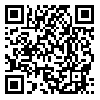Introduction: Among the factors that are involved in medical education, undoubtedly feedback is a special place. Feedback is a link between assessment and learning. Student satisfaction has an important indicator in the quality of learning and teaching. Learning is also associated with the satisfaction of students from the courses. The present study aimed to investigate the effect of feedback in clinical education.
Methods: This quasi-experimental study was performed on all of the seventh term nursing students in the faculty of Nursing and Midwifery in Arak and shazand cities. In the first semester in 93-94, they were trained post-CCU ward. The participants were selected through the census procedure. The students in both groups (intervention and control) were selected randomly in subgroups of 7 and 8 participants. In each group, the students were trained for 4 weeks in the morning shift. To determine the effects of these two methods, after completion of each of the training courses, all of the students completed the questionnaires and the results were compared.
Results: The results showed that the intervention and the control groups were similar in terms of demographic characteristics (gender, indigenous and student work experience) and there was no statistically significant difference. Therefore, the mean of overall student satisfaction scores in the intervention group was higher than the control group. In all of the levels, the intervention group had more satisfaction compared to the control one. Statistical test showed a significant difference between the two groups (P <0/003).
Conclusion: Generally, it can be said that the immediate and planned feedbacks during the training were offered to students and it could lead the way clinical training in the correct direction. So, the student satisfaction was increased with this process.
Received: 2015/05/31 | Accepted: 2015/08/24 | Published: 2015/11/28
| Rights and permissions | |
 |
This work is licensed under a Creative Commons Attribution-NonCommercial 4.0 International License. |


